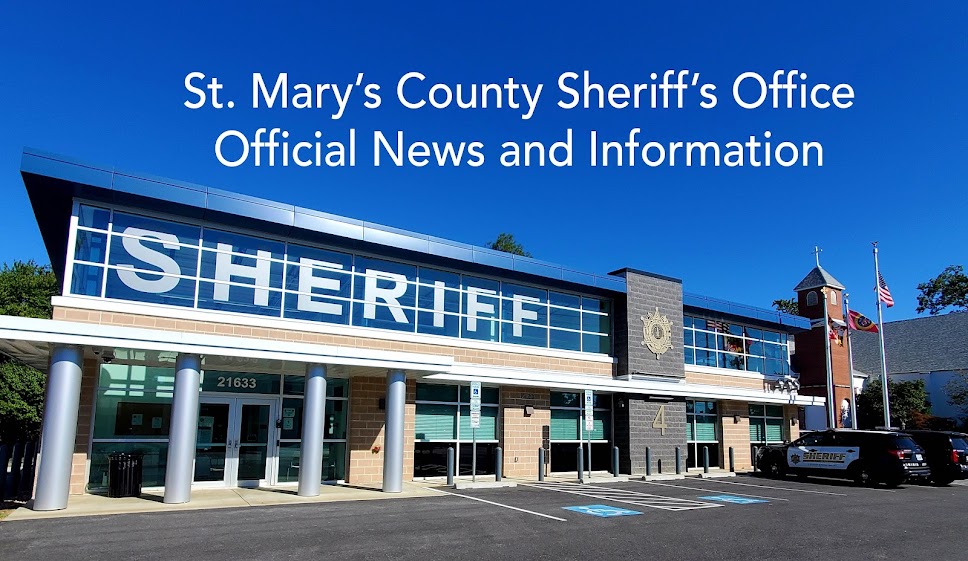Human trafficking is a form of modern-day slavery that involves the illegal trade of people for exploitation or commercial gain and represents one of the most shameful violations of human rights. In Maryland, human trafficking is often overlooked, especially in the rural areas. However, its increasingly regular occurrence has Maryland law enforcement collaborating to increase public awareness.
Several Agencies Adopt Training on Human Trafficking
On September 27 and 28, the St. Mary’s County Sheriff’s Office hosted many agencies – law enforcement and non-governmental organizations – Montgomery County Police Department; Maryland State Police; Homeland Security Investigations; FBI; Governor’s Office of Crime Control Prevention and TurnAround for a two-day training seminar that focused on reducing human trafficking through the enhancement of law enforcement efforts.
The training was spearheaded by law enforcement veterans:
• Steve Hess, Law Enforcement Coordinator, U.S. Attorney’s Office
• Thomas Stack, Human Trafficking Policy Analyst, Governor’s Office of Crime Control Prevention
• Captain Daniel Alioto, Commander of St. Mary’s County Sheriff’s Office Vice/Narcotics Division
Thomas Stack was hired in May of 2015 as a human trafficking policy analyst. One of his first goals was to educate law enforcement on human trafficking. “Human [trafficking] is not a well-known crime, but [human trafficking] is happening … As law enforcement, we need to prepare,” said Stack. Stack is also a member of the Workgroup to Study Safe Harbor Policy for Youth Victims of Human Trafficking, established by Governor Hogan. The goal of the workgroup is to study what legal protections and services Maryland should offer to young people under the age of 18 who are victims of human trafficking.
When contacted by Thomas Stack, Captain Alioto immediately recognized the benefit of partnering to enforce the law through a concentrated and more focused effort among police agencies. Through partnerships, law enforcement all over the state can investigate, train, and network to put a stop to human trafficking. Training will now be regularly held at different locations throughout Maryland.
Misconceptions Associated with Human Trafficking
There are several myths and misconceptions associated with human trafficking. Human trafficking is commonly linked to foreign-born individuals and those from a lower socioeconomic group. However, victims can be of any age, race, gender, or nationality. Another misconception is that victims will attempt to seek help when in public; however, trepidation usually hinders them from seeking help. According to the Blue Campaign, “Every year, millions of men, women and children are trafficked in countries around the world, including the United States. It is estimated that human trafficking generates many billions of dollars of profit per year, second only to drug trafficking as the most profitable form of transnational crime.” Through the Blue Campaign, the Department of Homeland Security raises awareness about human trafficking.
Human Trafficking in St. Mary’s County
Captain Alioto presented several human trafficking case studies that occurred in St. Mary’s County and his examples again highlighted the importance of partnerships, education, and proper identification of a human trafficking situation. “Manpower and resources in law enforcement are constantly taxed; we cannot be successful moving forward without these continued collaborative efforts. Our partnerships include other state, local and federal agencies; however, the critical partnership is and always will be the community. We continue to get great support from the citizens of St. Mary’s County on this issue and many others. Sheriff Cameron remains committed to combating [human trafficking] in St. Mary’s County and this was an excellent opportunity to host all of the attending jurisdictions for this outstanding two-day training session.”
Sheriff Timothy K. Cameron stated, “In [law enforcement], we have heard enough stories about people who have been subjects of human trafficking to validate the thought that [human trafficking] is a real problem in our community. We take [human trafficking] very seriously and are making every attempt to educate and inform our officers, so they recognize the signs of [human trafficking], and act accordingly. We will take every report citizens make seriously.”
For more information about human trafficking, please visit the National Human Trafficking Resource Center website at traffickingresourcescenter.org/states or the Blue Campaign website at www.dhs.gov/blue-campaign.
 |
| “Human [trafficking] is not a well-known crime, but [human trafficking] is happening … As law enforcement, we need to prepare,” said Stack. |


